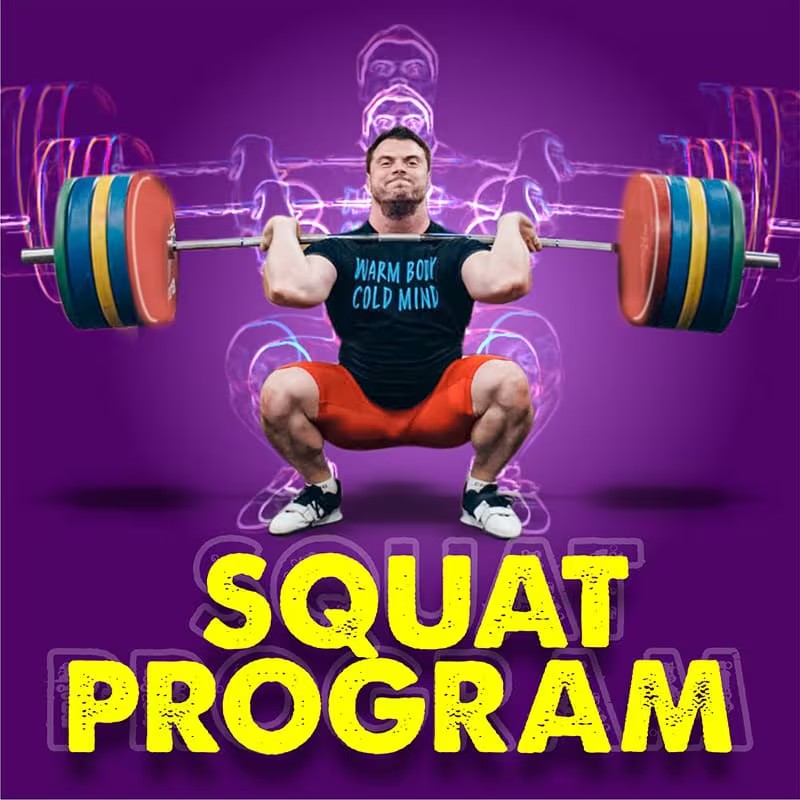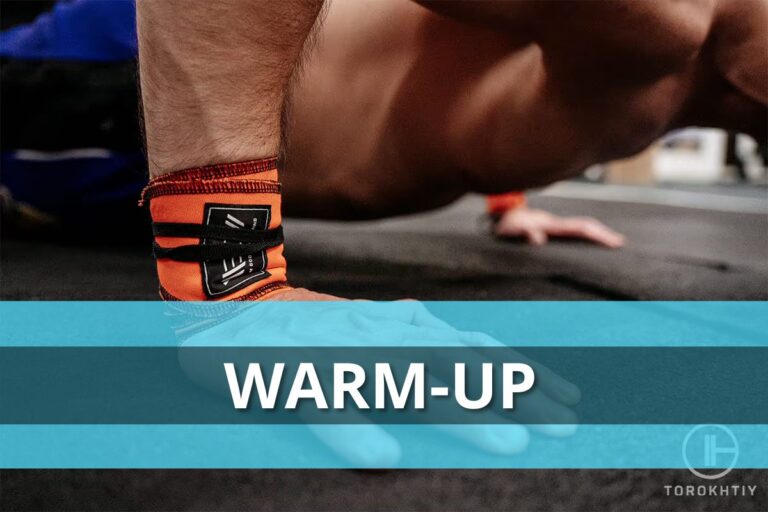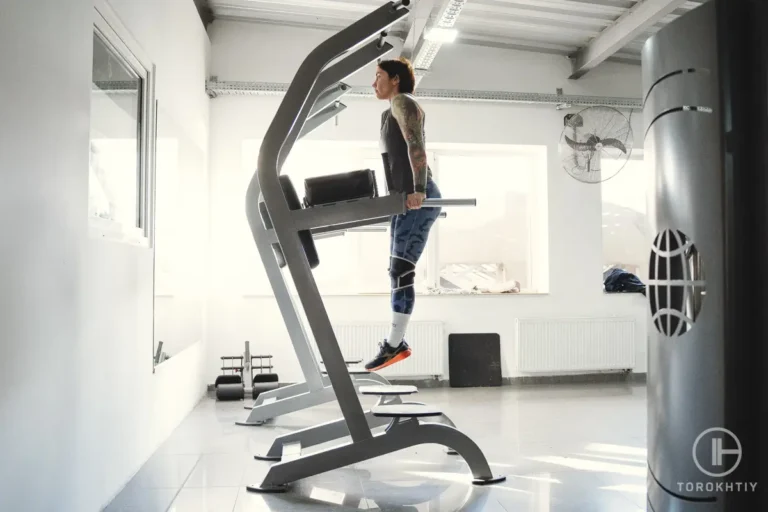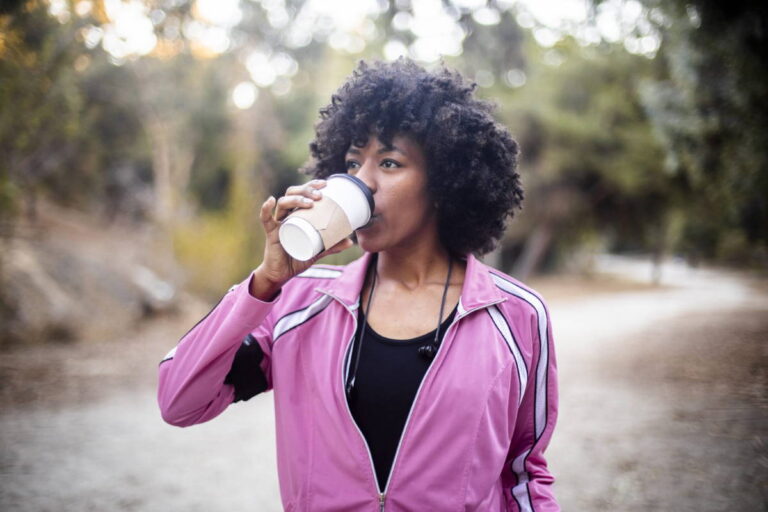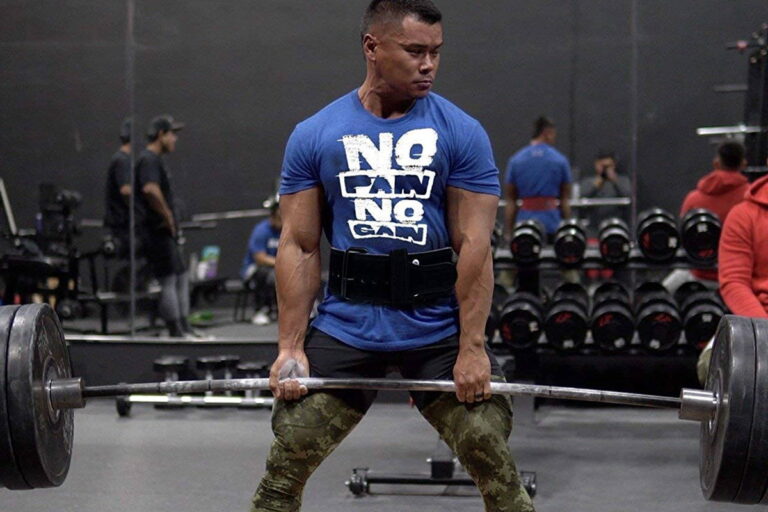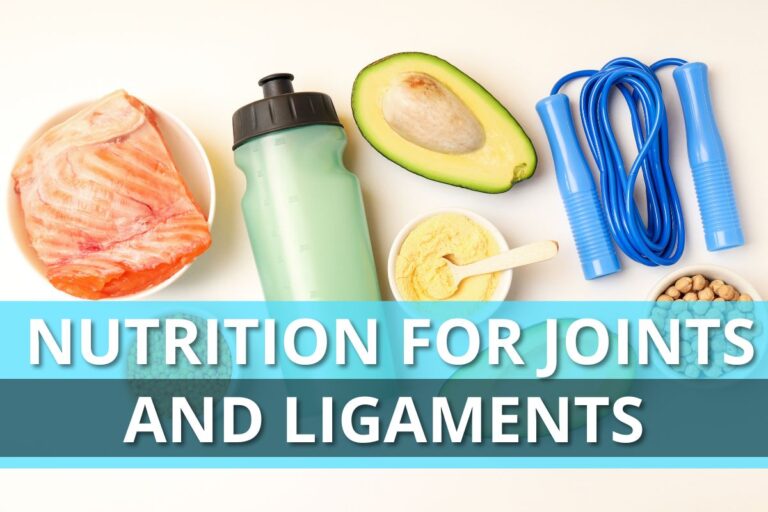11 Squat Accessory Lifts to Boost Your Squat Results
Ah, squats… You don’t need to have tried doing one to know they mean business, it’s enough to just see someone performing it. Squats are no joke and there are no shortcuts when it comes to them. However, there are ways of building that formidable squat strength, and that’s with squat accessory lifts. They’re a game-changer that will improve your technique and reduce the risk of injury, so you’ll be able to push your limits safer.
Although they’re really effective, squat accessory lifts get overlooked sometimes in favor of other, more glamorous exercises, but they’re crucial for developing balance, stability, and power. You can be an experienced powerlifter or just someone who’s trying to find a way of breaking through a plateau, they will fill the gaps in your training, address weaknesses, imbalances, and help you progress.
We’re going to check out the most effective exercises that can improve your explosive power and help you transform your training.
Let’s squat!
What are squat accessory lifts? They are special exercises that are designed to strengthen the muscles and improve the techniques involved in squatting. Squat accessory lifts focus mostly on the quads, hamstrings, glutes, and core.
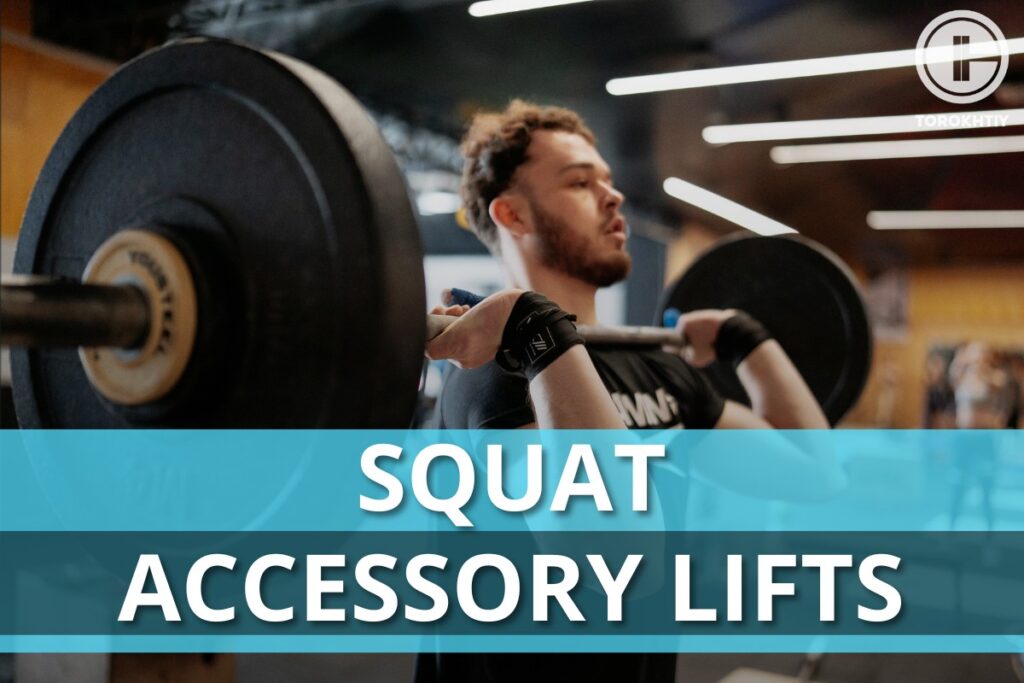
Accessory Lifts: What Are They and Why They’re Important?
Here’s a situation for you to imagine: you’ve been training for a while, but you feel like you’re not really getting anywhere. You’re still a beginner, although a desperate one because you can’t wait to see some actual progress and you feel like you’ve hit a plateau before even doing anything.
Let’s be honest – you’ve probably been focusing on the same movements and failed to include some accessory lifts into your routine. Believe it or not, that happens a lot because squat accessories are often overlooked, especially by beginners who don’t know how useful they are.
If you want to understand how important accessory lifts are, you first need to understand the complexity of compound movements. Take the squat, for example, since that’s what we’re dealing with right now. The squat is an absolute powerhouse that engages multiple muscle groups, especially the major leg muscles. It’s even used in rehabilitation.
When you break the squat down into its components, you see that each group of muscles has their own function. So, where do accessory lifts fit in? It’s really simple – they target these individual muscle groups to make them stronger.
The best way to explain this is through an example, so let’s take quads, the muscles at the front of your thighs. Squats definitely engage them to a certain extent, but if you do isolation exercises, you will be able to target them specifically and make them stronger. This targeted approach will also help address any muscle imbalances and make sure that each part of the body contributes optimally to the overall strength and function of the squat.
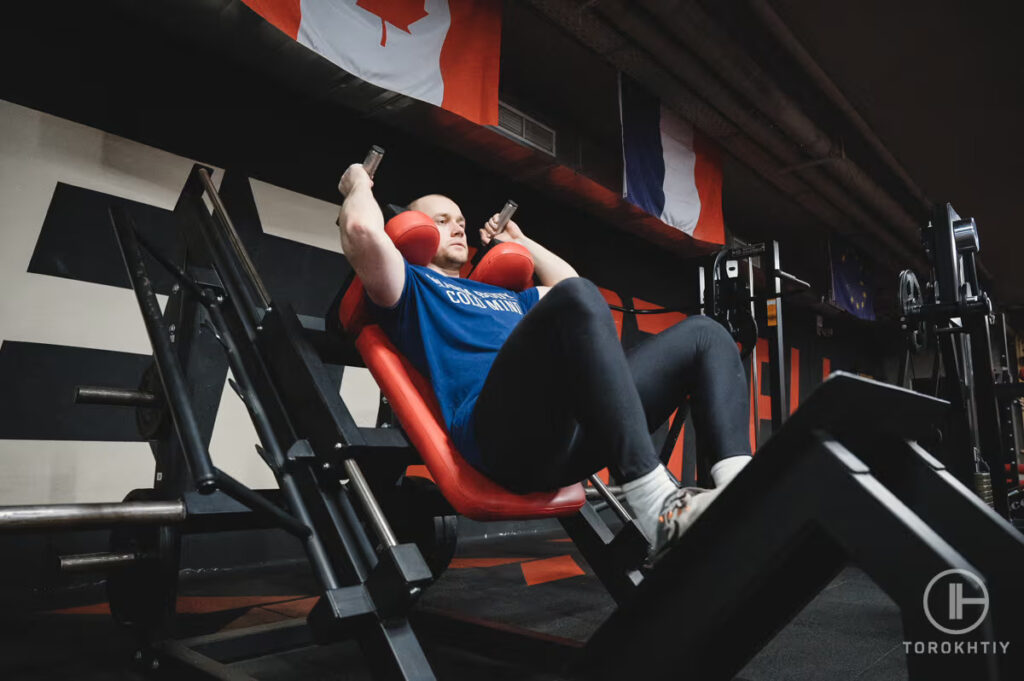
But it’s not about just strength with squat accessory exercises, they can also improve your form and technique. Take the deadlift; it’s a compound movement that engages the hamstrings, glutes, and lower back muscles, so strengthening the lower back is more than useful because it will contribute to better posture and reduce the risk of injury. Think of accessory lifts as building blocks that allow you to refine your technique and build a solid foundation for more complex exercises.
In addition to targeting individual muscles, squat assistance exercises play a big part in preventing muscle imbalances. Even though the compound movements engage multiple muscle groups on their own, they might not address specific weaknesses or imbalances that could develop over time. Since their focus is so targeted, accessory lifts will help you identify and address these weaknesses, so you’ll look better and there won’t be any muscle imbalances to cause injuries.
There are also benefits that extend beyond muscles, since accessory lifts can help with joint health and mobility. You’ve probably noticed that a lot of compound movements need a full range of motion, so if you take some time to do accessory lifts, you will be able to improve flexibility and mobility. You can incorporate lunges or Bulgarian split squats into your routine to improve the mobility of your hips and ankles, which will translate into a more stable, controlled squat.
Although accessory lifts for squats have a supporting role in strength training and the compound movements are the ones that are on the center stage, they’re more than just your basic add-ons. They’re integral components that can do a lot for your health and performance, fill in the gaps, and add depth to your fitness journey.
How to Choose Proper Squat Accessory Exercises?
There are many auxiliary lifts for squats, and you need to make sure to choose the correct ones. Of course, whichever exercise you choose to do, you’ll benefit from it, but if there are specific things you want to work on or issues you need to take care of, you have to know which exercise does what.
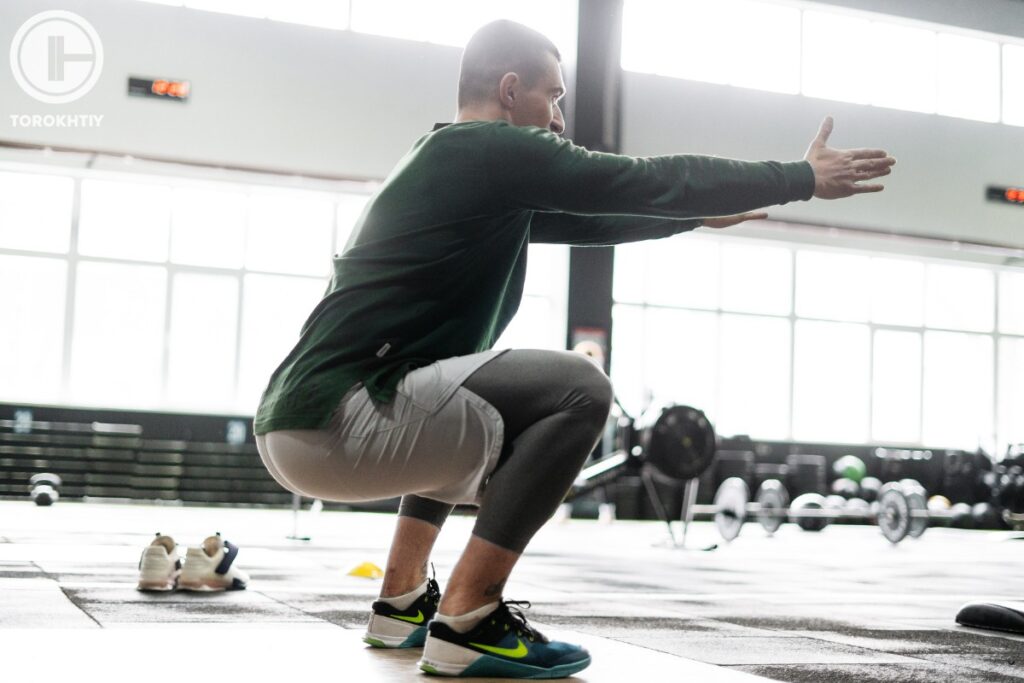
1. Importance of Recording Your Lifts
Okay, this might sound like a waste of time and like you’re doing too much but hear me out. If you keep a detailed record of your training sessions, you’ll get valuable insights into your progress that no other method can give you.
You will be able to see which areas need improvement and that will help you choose the proper exercises. The recording will be especially handy in situations where you want to take care of imbalances or weaknesses.
You can keep a training journal, you can keep progress in an app of some sorts, or you can just take notes, but if you keep a record of your lifts, you’ll be well-informed, and you will make smarter choices/
2. Imbalances and Asymmetries
If you want to be sure you’re choosing the correct exercise, you need to understand muscle imbalances and asymmetries. Muscle imbalances mean that one side or group of muscles is stronger than the other or, in simple terms, one side is wonky, and the other is not.
You need to pay close attention to how your body responds during the squats to identify these imbalances. For example, you may notice that one side works harder than the other, or there could be differences in stability or in the engagement of your muscles.
You want to choose exercises that specifically target the weaker (or less engaged) side that can help correct these imbalances over time and make your squats more symmetrical, efficient… Basically, non-wonky.
3. Movement Pattern Issues, Squat Technique
You want to know what’s fundamental to a successful squat? Proper movement patterns and squat technique. If you have any issues in these areas, you should address them on time and do some accessory lifts. Think about what you’re struggling with; is it depth, knee valgus, or do you have trouble with keeping your torso upright?
Accessory exercises can target and improve specific aspects of your squat technique. Say depth is an issue – you should include box squats or goblet squats to help reinforce correct depth and form. If you choose the correct exercises to address movement pattern issues, you have a foundation for a more effective, safer squat.
4. Finding Limiting Factors in Your Lift
Pinpointing the limiting factors in your lift can be tricky sometimes, but it’s absolutely vital if you want to choose the proper accessory movements for squat. The factors vary from person to person and can be things like weak quadriceps, hamstrings, lower back, or it could be issues related to bracing and breathing.
Pay attention to where you feel the most strain or which parts of the lift are the most challenging. Is it the initial push from the bottom of the squat, or perhaps the mid-range or the lockout?
Once you understand what’s limiting your lift, you can choose exercises to handle it directly.
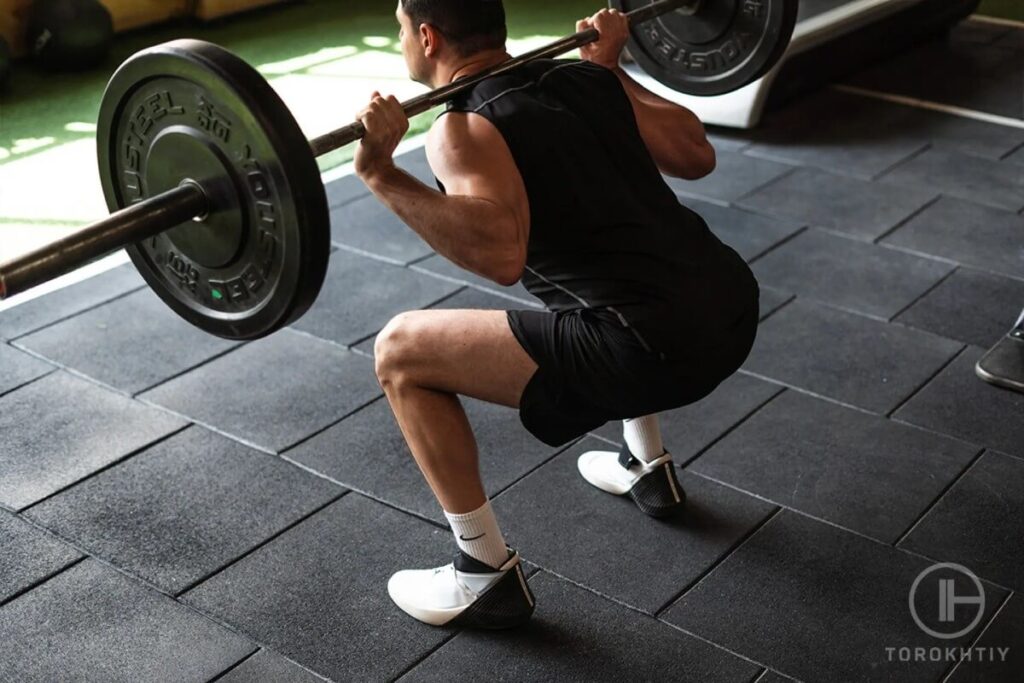
4 Examples of Accessory Squat Lifts to Incorporate Into Your Training
Whatever issue you’re dealing with – we have the exercise that can take care of it. We’ll go into detail about the issues mentioned in the previous section, and you’ll know exactly how to deal with each of them.
🔻12 Week Squat Program by Oleksiy Torokhtiy
Do you want to double your squat strength? In just 12 weeks, you’ll be able to boost your squat results.
This program transforms any ordinary squat into a powerful athletic movement.
What’s included:
- 12 weeks of squat programming;
- Effective combination of sets, reps, and weights;
- Fully designed and coached by Oleksiy Torokhtiy;
- Over 60+ movements, banded work, and weight training;
- Accessory work for core, joint stability and injury prevention;
- Max out on back squat and front squat at the end.
Start now and boost your squat results!
Accessory Lifts for Asymmetry (Unilateral Work)
If you need to address asymmetry in your squat, you will have to include unilateral exercises that target each side of your body independently. This will help correct imbalances, and as a bonus, improve stability and control.
| EXERCISE | DESCRIPTION |
|---|---|
| Bulgarian Split Squats | Targets quads, hamstrings, and glutes. Stand a foot away from an elevated surface, place one foot behind on the bench, and the other forward. Bend the front knee, keeping the back foot elevated. |
| Single-leg Romanian Deadlifts | Focuses on hamstrings, glutes, and lower back, improves balance. Stand on one leg, hinge at the hips, extend the opposite leg behind with a slight knee bend. Lower the upper body parallel to the ground and return to start. |
| Single-leg Step-Ups | Targets quads, hamstrings, and glutes, requires stability and balance. Use a sturdy bench or a platform, step up with one leg, drive through the heel to lift and lower back down. |
| Side Planks | Targets the core and hip muscles. Lie on your side, elbow beneath the shoulder, legs stacked. Lift your hips to create a straight line, hold, then return to start. Repeat on each side. |
1. Bulgarian Split Squats
This is a really powerful unilateral exercise, and it will target your quads, hamstrings, glutes, and at the same time, challenge your stability. To do Bulgarian split squats, you’ll stand a foot away from a bench or any kind of elevated surface. Place one foot behind you on the bench and the other foot forward while being in a hip-width stance.
Bend your front knee and lower your body but keep your back foot elevated and make sure the front knee doesn’t extend beyond the toes. When you’re done with the movement, return to where you started from and repeat on both legs.
This exercise is very good for addressing asymmetry because it forces each of your legs to work on its own. Since it isolates each side, Bulgarian split squats will help with identifying and correcting any imbalances when it comes to strength. Plus, there’s also the stability component that improves overall balance and control and helps make your squat even more stable.
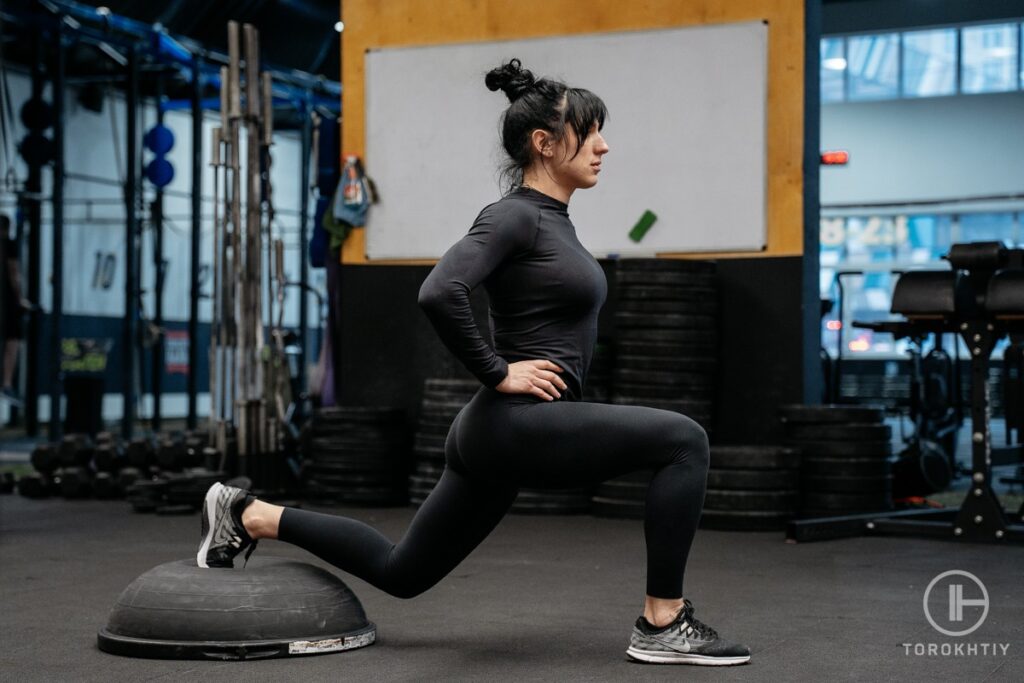
2. Single-Leg Romanian Deadlifts
Single-leg Romanian deadlifts are excellent if you need to work on your hamstrings, glutes, and lower back, and especially if you need to improve your balance. Stand on one leg and bend your knee a little. Hinge at the hips while you extend the opposite leg behind you, keeping the knee straight.
Lower your upper body until it’s parallel to the ground, then go back to the starting position. This exercise is challenging, but it’s great for promoting unilateral strength and stability, addressing any asymmetries in your squat.
Single-leg Romanian deadlifts will isolate your hamstrings and glutes, but also challenge the stabilizing muscles along the entire posterior chain. If you’re dealing with asymmetry or weakness on one side, this exercise is ideal because the controlled movement helps engage your muscles more, it helps with coordination, and all of this ends up translating into a more balanced squat.
3. Single-Leg Step-Ups
This is another exercise that will target your quads, hamstrings, and glutes, but it will also need stability and balance. Use a sturdy bench or a platform and step up onto it with one leg and place the entire foot on the surface. Drive through the heel to lift your body, and then lower it back down. Alternate between legs to work both sides evenly.
Single-leg step-ups will promote symmetry and address imbalances that can cause injuries. They’re a functional, practical way to handle asymmetry because they rely on each of your legs working independently to lift your body, so it exposes and corrects any imbalances between your left and right side.
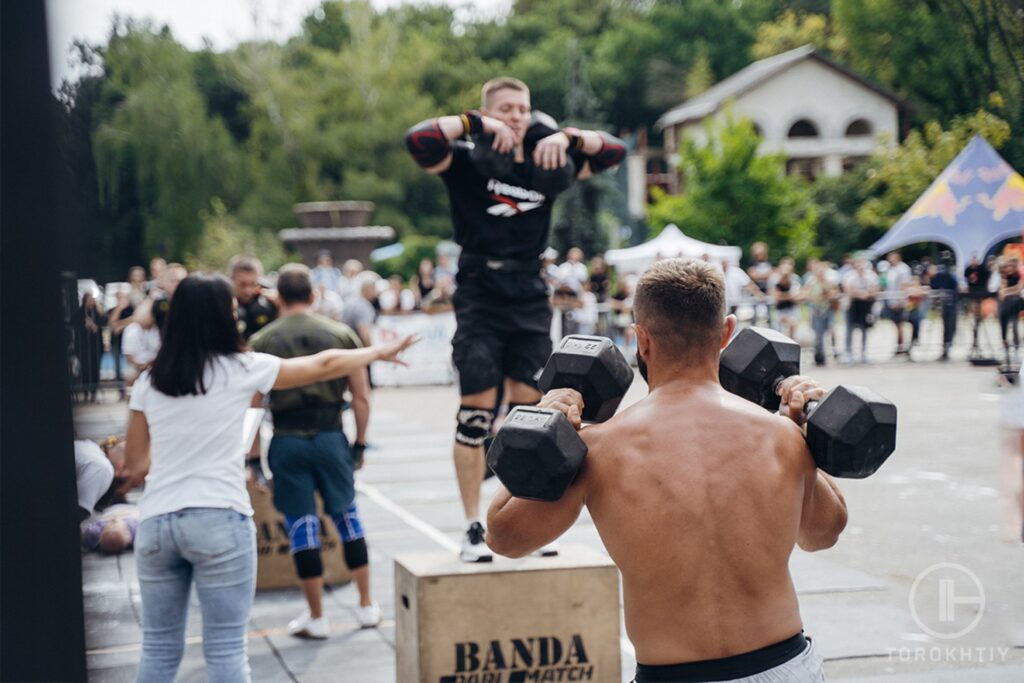
4. Side Planks
This is not a traditional lower body exercise, but side planks can do a lot to handle asymmetry because they target the muscles along the sides of your core and hips. Lie on your side with your elbow directly beneath your shoulder and your legs stacked. Lift your hips in a way that you make a straight line from your head to your heels.
Hold it for a while, then repeat, and do this on both sides. Side planks engage the lateral stabilizers, help prevent injuries, and promote balanced strength on each side of the body.
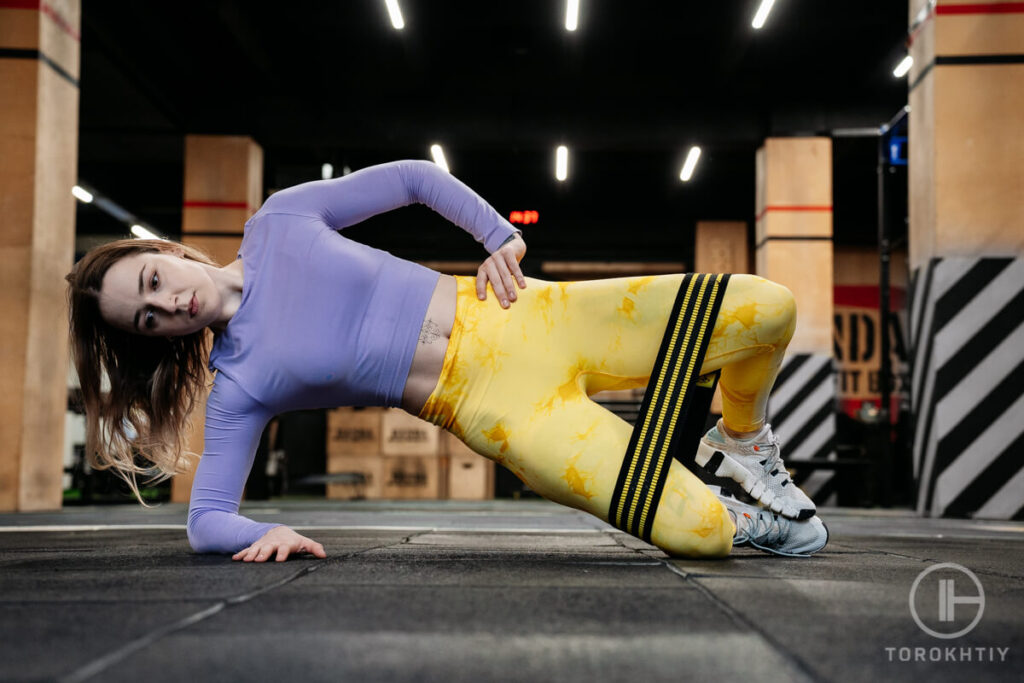
3 Accessory Lifts for Movement Pattern (Regressing)
If you’re facing movement pattern issues, you can reinforce proper form and technique by regressing to simpler exercises. These will give you a foundation for building a more efficient squat movement pattern.
| EXERCISE | DESCRIPTION |
|---|---|
| Box Squats | Uses a box or a bench. Squat until your glutes lightly touch the surface, pause, then drive back up. |
| Goblet Squats | Beginner-friendly. Hold a kettlebell or a dumbbell close to the chest, bend the knees, push the hips back, and squat with elbows touching the inside of the knees. |
| Wall Squats | Stand with the back against a wall, lower into a squat keeping the back against the wall. |
1. Box Squats
These are an excellent regression for addressing depth and reinforcing proper squat mechanics. Set up a box or a bench behind you and squat down until your glutes lightly touch the surface. Make a little pause, and then drive back up. The box serves as a guide to keep the depth consistent and to make both descent and ascent controlled. This will do wonders for refining your technique.
Box squats are excellent for people who need help with squat depth or those that want to improve overall squat mechanics. When you use a box, this gives a clear indicator of the depth you need to go for and prevents you from going too low or rounding your lower back. The little pause at the bottom improves muscle engagement and helps you establish a consistent, effective movement pattern.
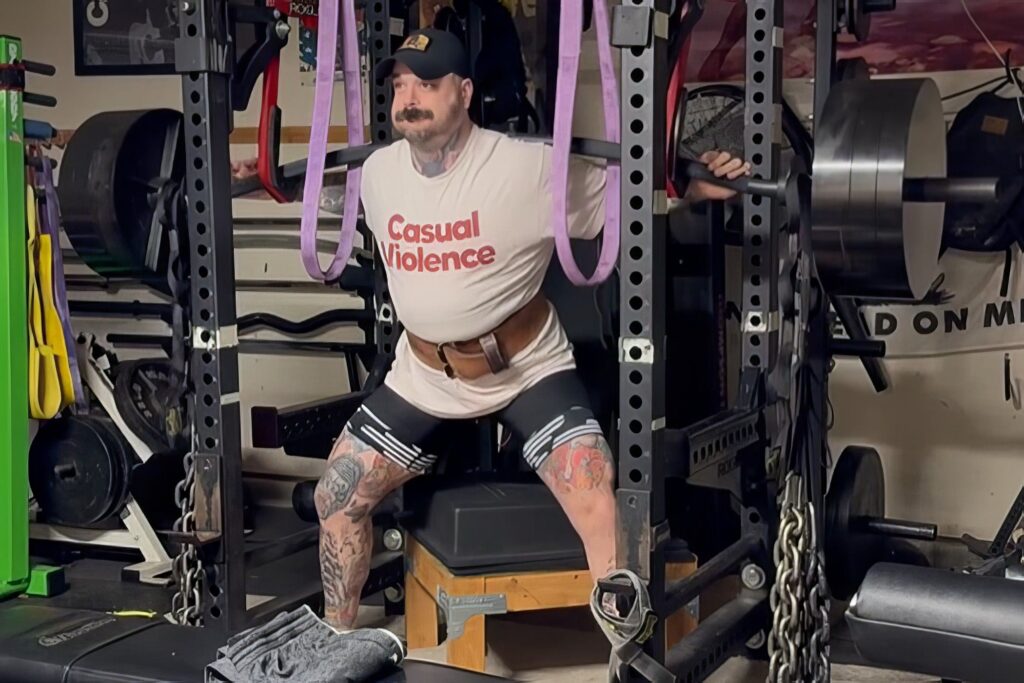
2. Goblet Squats
If you’re a beginner, this is something that you’ll be able to do, and it will help with your squat mechanics. Hold a kettlebell or a dumbbell close to your chest and keep your torso upright. Bend your knees, push your hips back, and squat down (make sure your elbows are touching the inside of your knees). Goblet squats engage the core and emphasize proper hip hinge, which helps correct issues with movement patterns in the squat.
They’re excellent for beginners, but they’re also good for people of all fitness levels who want to refine the mechanics of their squat. The front-loaded position with the kettlebell helps keep the torso upright and engages the core, which promotes a natural hip hinge.
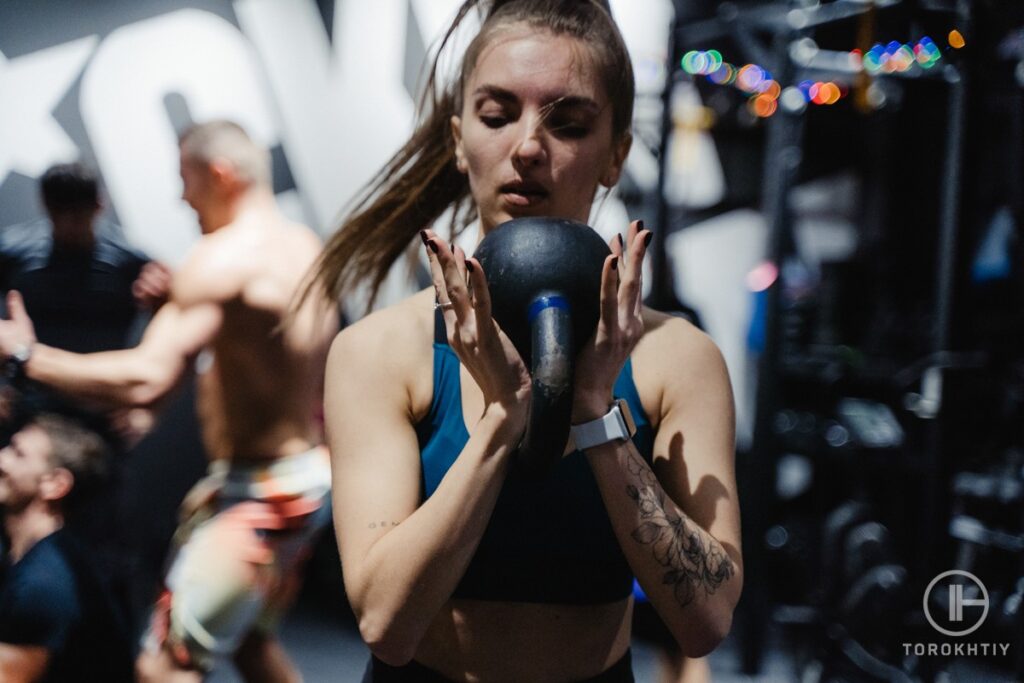
3. Wall Squats
One of the most common issues with squats is keeping the torso upright – it’s challenging to say the least, and it takes a lot of work to perfect it. If you’re one of the people who have this issue, wall squats can be a great help. Stand with your back against a wall and your feet a few inches away.
Lower your body into a squat but keep your back against the wall the entire time. This will help with proper alignment and understanding the squat movement pattern better.
Wall squats are amazing for perfecting the squat form because the position with your back against the wall provides immediate feedback on posture and encourages you to keep your back straight. They prevent you from leaning forward and if you practice proper movement patterns with the support of the wall, you can slowly transfer that to the free-standing squat, which will result in better form.
4 Accessory Lifts for Limiting Factors (For Quads, Hamstrings, Lower Back/ Posterior Chain)
When you know which factors are limiting you, whether in the quads, hamstrings, or the lower back, you know exactly which exercises to do to help with that. You should choose the exercise based on where and how you experience challenges during the squat – in the bottom, mid-range, or lockout.
| EXERCISE | DESCRIPTION |
|---|---|
| Front Squats | Place the barbell on the front of your shoulders, cross your arms to create a shelf, or use a clean grip. Feet shoulder-width apart, core engaged, chest lifted, Push the hips back, bend the knees, and lower until your thighs are parallel to the ground. Drive through heels to return. |
| Nordic Hamstring Curls | Kneel on a mat and secure your feet. Lower the upper body forward, bend at the hips, keep your back straight. Control the descent until your body is parallel to the ground, engage the hamstring to resist gravity. |
| Good Mornings | Place the barbell on the upper back, feet hip-width apart, bend the knees a little. Hinge at the hips, push them back, and keep the back straight. Lower your torso until you’re parallel to the ground. |
| Paused Goblet Squats | Variation of a traditional goblet squat. Do a normal goblet squat, but pause for 2-3 seconds at the bottom of the squat. |
1. Front Squats
This exercise will shift the focus to the quads and they’re great for people dealing with weaknesses in that area. Place the barbell in a squat rack and position it on the front of your shoulders. Cross your arms to create a sort of a “shelf” for the bar to rest on. You can also use a clean grip if you place your fingertips under the bar and cross your arms.
Your feet need to be shoulder-width apart, your core should be engaged, and the chest lifted. Start by pushing your hips back and bending your knees. Keep your torso upright and lower yourself until your thighs are parallel to the ground (or as deep as your mobility allows you to go). Drive through the heels to get back to the starting position, fully extending your hips and knees.
Your quads will get the most attention, but front squat accessories will also engage your core, upper back, and stabilizing muscles. To do them correctly, you need to keep your torso upright, which places less stress compared to back squats.
This is what makes front squats such a good choice for anyone that wants to have strong quads but doesn’t want to strain their lower back like they would with back squat accessory exercises. You’ll also benefit from them if you struggle with the initial push from the bottom of the squat, or if you have trouble keeping an upright position because the unique placement of the barbell helps with the correct posture.
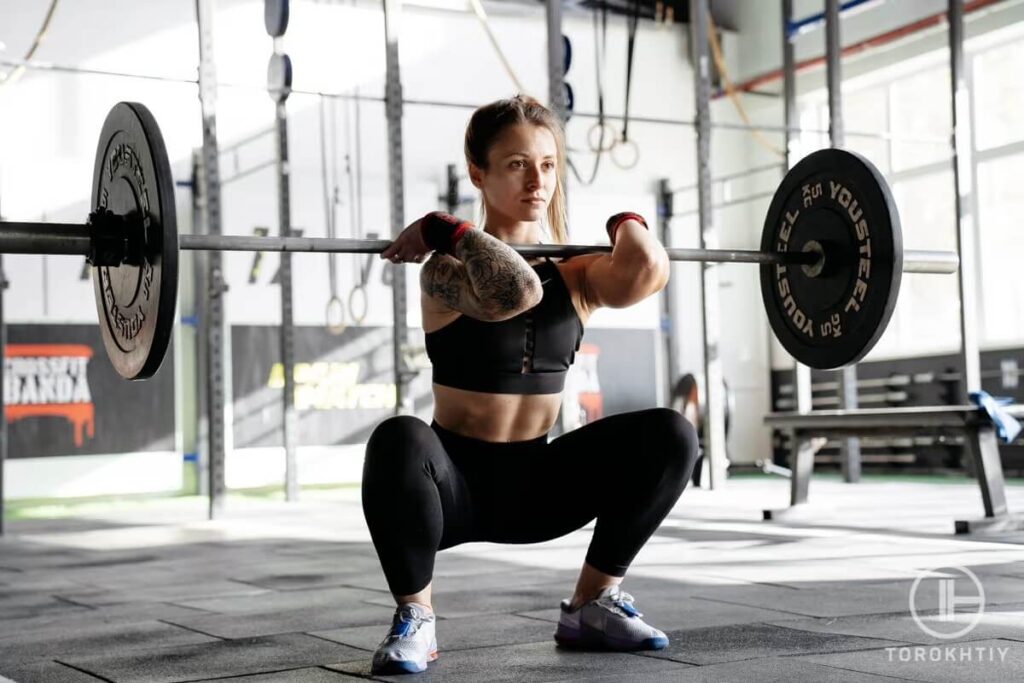
2. Nordic Hamstring Curls
Nordic hamstring curls target, of course, your hamstrings and they’re super effective for developing strength through the eccentric (lengthening) phase of the muscle contraction.
Kneel on a mat and either have a partner secure your feet, or you can place them under a stable surface. Lower your upper body forward, bend at the hips and keep your back straight. Control your descent until your body is parallel to the ground and use your hamstrings to resist gravity. When it’s time to return to where you started from, engage your hamstrings, and keep the movement controlled.
This exercise will make your hamstrings stronger, and it will handle potential weaknesses in the mid-range of the squat. It’s great for people who want to improve the strength and stability of their hamstrings.
3. Good Mornings (For the Posterior Chain)
If good mornings don’t get your attention because of their super fun name, they will do so with the benefits they offer. They target the posterior chain, including the lower back, hamstrings, and glutes, so they’re great for addressing weaknesses in the mid to upper range of the squat.
Place a barbell on your upper back, like you would if you were doing a squat. Keep your feet hip-width apart and bend your knees a little. Hinge at the hips and push them back but keep your back straight. Lower your torso until it’s parallel to the ground (or as far as your flexibility will allow you to lower). Okay, so that was the hard part… Sort of. Now you just need to go back up and while you’re doing that, engage your glutes and hamstrings. Keep in mind that the movements should be controlled.
Good mornings will give your hamstrings a good stretch and activate the entire posterior chain. This is a great exercise if you want to target the muscles that are responsible for hip extension.
4. Paused Goblet Squats
This is a variation of the traditional goblet squat that has an added pause at the bottom, which will engage your quads more.
You do it pretty much in the same way you would a goblet squat – hold a dumbbell or kettlebell with both hands, close to your chest, and stand with your feet shoulder-width apart. Push your hips back, bend the knees, and lower yourself into a squat (your thighs should be at least parallel to the ground). Now, hold this position for 2-3 seconds and engage your core and quads as you return to the starting position.
Paused goblet squats add an isometric element to the traditional squats and emphasize the strength of your quads and the stability of your core. The pause at the bottom is challenging because you need to maintain control and engage the quadriceps throughout the entire lift. If you’re struggling with the mid-range of the squat, give these a try.
FAQ
What are accessory exercises for squats?
Accessory workouts for squats target various muscle groups, help address weaknesses, imbalances, and improve your overall squat performance. They usually involve movements like lunges, step-ups, and leg presses.
Are leg extensions a good squat accessory?
Yes, leg extensions can be great because they focus on isolating and strengthening the quads. However, you need to include some compound movements, too, so your leg workout is well-rounded.
Are hip thrusts a good squat accessory?
Hip thrusts are excellent because they emphasize glute activation and hip extension. When you strengthen your glutes, you have more stability and power during squats, so hip thrusts are a great addition to any training routine that involves the lower body.
Conclusion
The whole point of this entire topic is that these extra exercises that people often overlook can change your entire squat game – for the better, of course. Not only will they target specific muscles, but they’ll iron out any imbalances and refine your squat form. Pay close attention to what you struggle with during squats and then do some exercises that help deal with those issues. It’s all about customizing your workout, progressing at your own pace, and leveling up your squat game.
Have you tried any of the exercises mentioned here? Are there any specific accessory lifts you swear by and how have they helped you? Any tips beginners can use to make this whole thing easier?
Let us know what you think – any tips, tricks, questions, or even constructive criticism are welcome!
Squatting out!
References:
- Angela Blasimann, Simon Eberle, Manuel Markus Scuderi “Effect of Core Muscle Strengthening Exercises (Including Plank and Side Plank) on Injury Rate in Male Adult Soccer Players: A Systematic Review,” Sportverletz Sportschaden 32, no. 1 (2018): 35-46.
- Jacklyn Joseph, Tengku-Fadilah Kamalden, Qais Gasibat, Shamsulariffin Samsudin “Occurrence of Muscle Imbalance and Risk of Injuries in Athletes using Overhead Movements: A Systematic Review,” Sport Mont Journal 19, no. 3 (2021): 3-10.
- Kate Neudecker “Learn How to Do Front Squats to Fire up Your Quads and Light up Your Core,” Men’s Health, https://www.menshealth.com/uk/how-tos/a735538/front-squat/ (accessed February 9th 2024)
- Lindsay V. Slater, Joseph M Hart “Muscle Activation Patterns During Different Squat Techniques,” J Strength Cond Res 31, no. 3 (2017): 667-676.
- Luke Del Vecchio “The Health and Performance Benefits of the Squat, Deadlift, and Bench Press,” MOJ Yoga & Physical Therapy (April 2018).
Why Trust Us?
With over 20 years in Olympic Weightlifting, our team does its best to provide the audience with ultimate support and meet the needs and requirements of advanced athletes and professional lifters, as well as people who strive to open new opportunities and develop their physical capabilities with us.
By trusting the recommendations of our certified experts in coaching, nutrition, dietology, and sports training programming, as well as scientific consultants, and physiotherapists, we provide you with thorough, well-considered, and scientifically proven content. All the information given in the articles concerning workout programming, separate exercises, and athletic performance, in general, is based on verified data. We ensure that you can rely on our professionals’ pieces of advice and recommendations that can be treated as personalized ones which will benefit you and fully meet your needs.
The product testing process is described in more detail here
Author: Sergii Putsov
Head of Sport Science, PhD
Best Results: Snatch – 165 kg,
C&J – 200 kg
Sergii Putsov, Ph.D., is a former professional weightlifter and National team member, achieving multiple medals in the 94 kg weight category at national competitions. With a Master’s degree in “Olympic & Professional Sport Training” and a Sport Science Ph.D. from the International Olympic Academy, Greece, Sergii now leads as the Head of Sport Science. He specializes in designing training programs, writing insightful blog articles, providing live commentary at international weightlifting events, and conducting educational seminars worldwide alongside Olympic weightlifting expert Oleksiy Torokhtiy.

